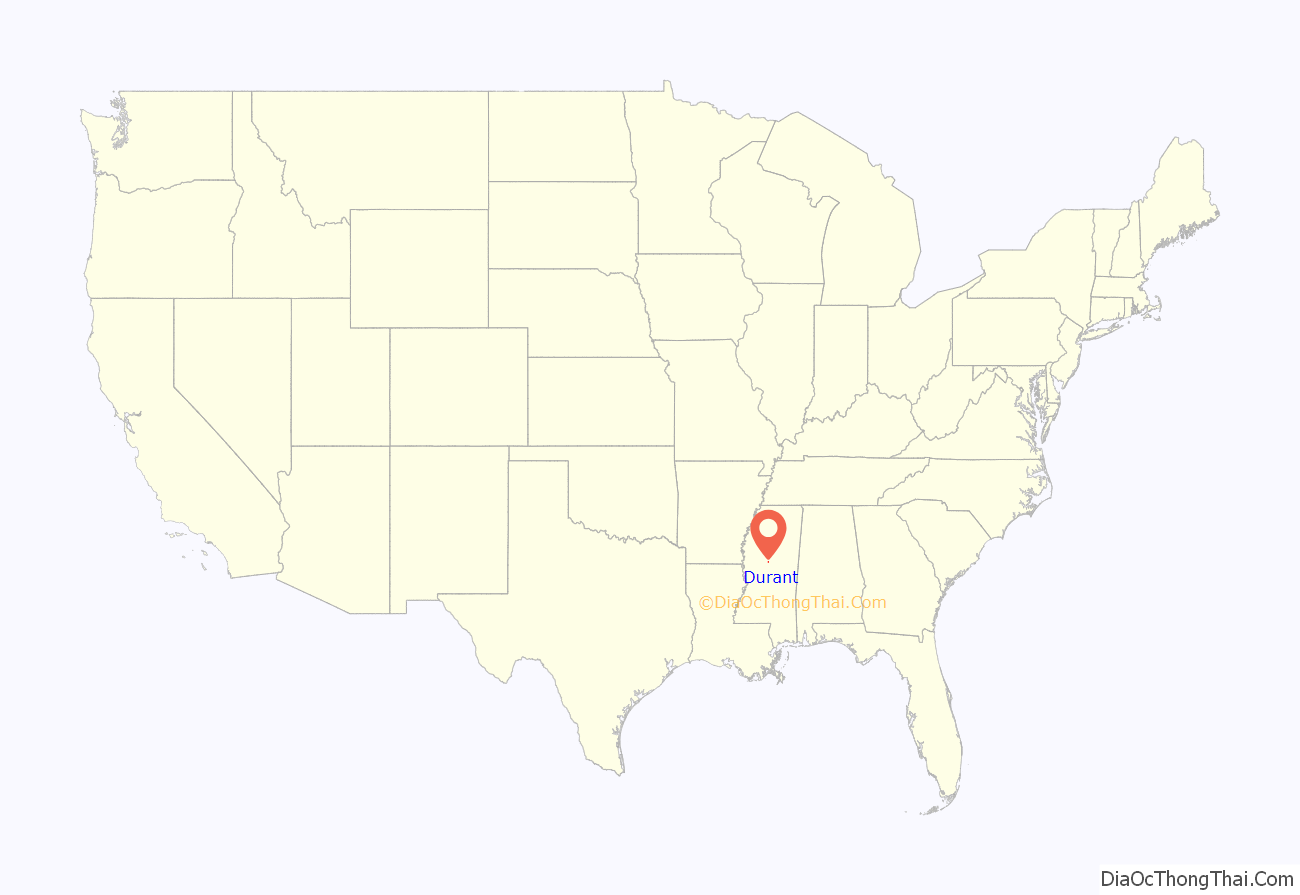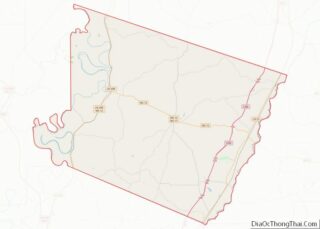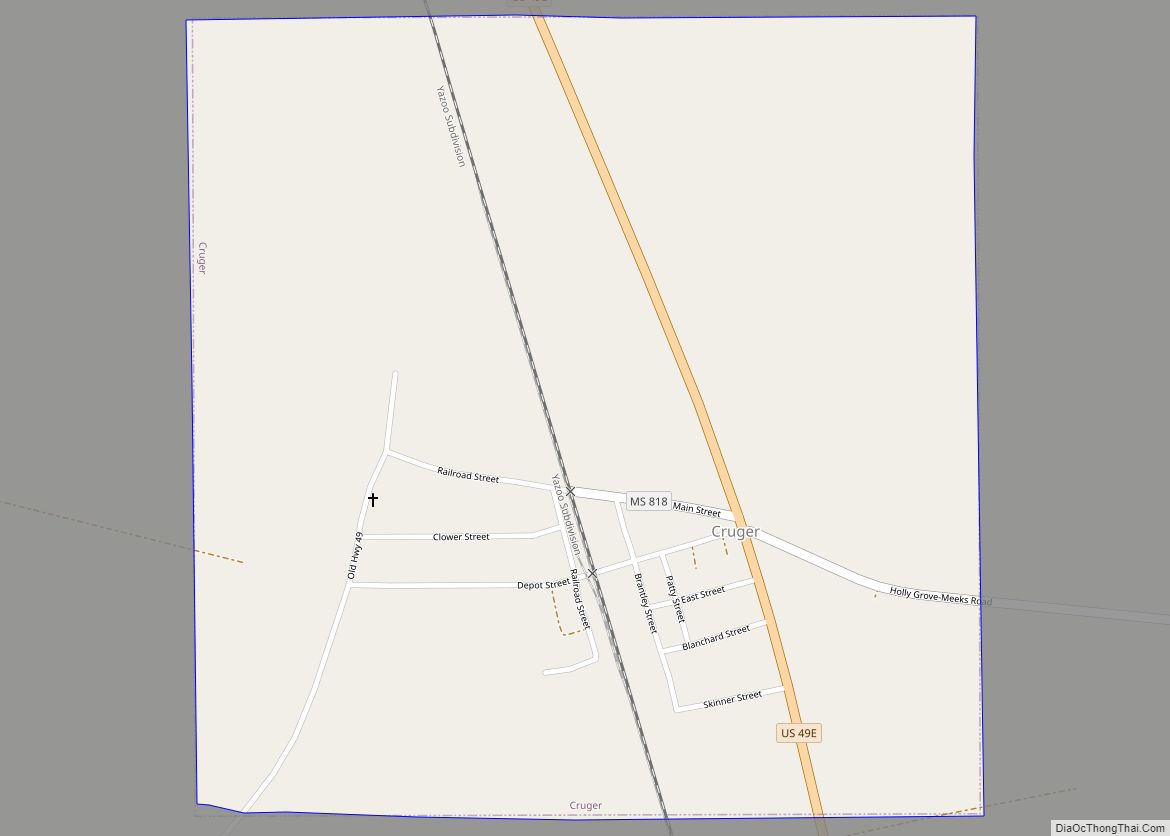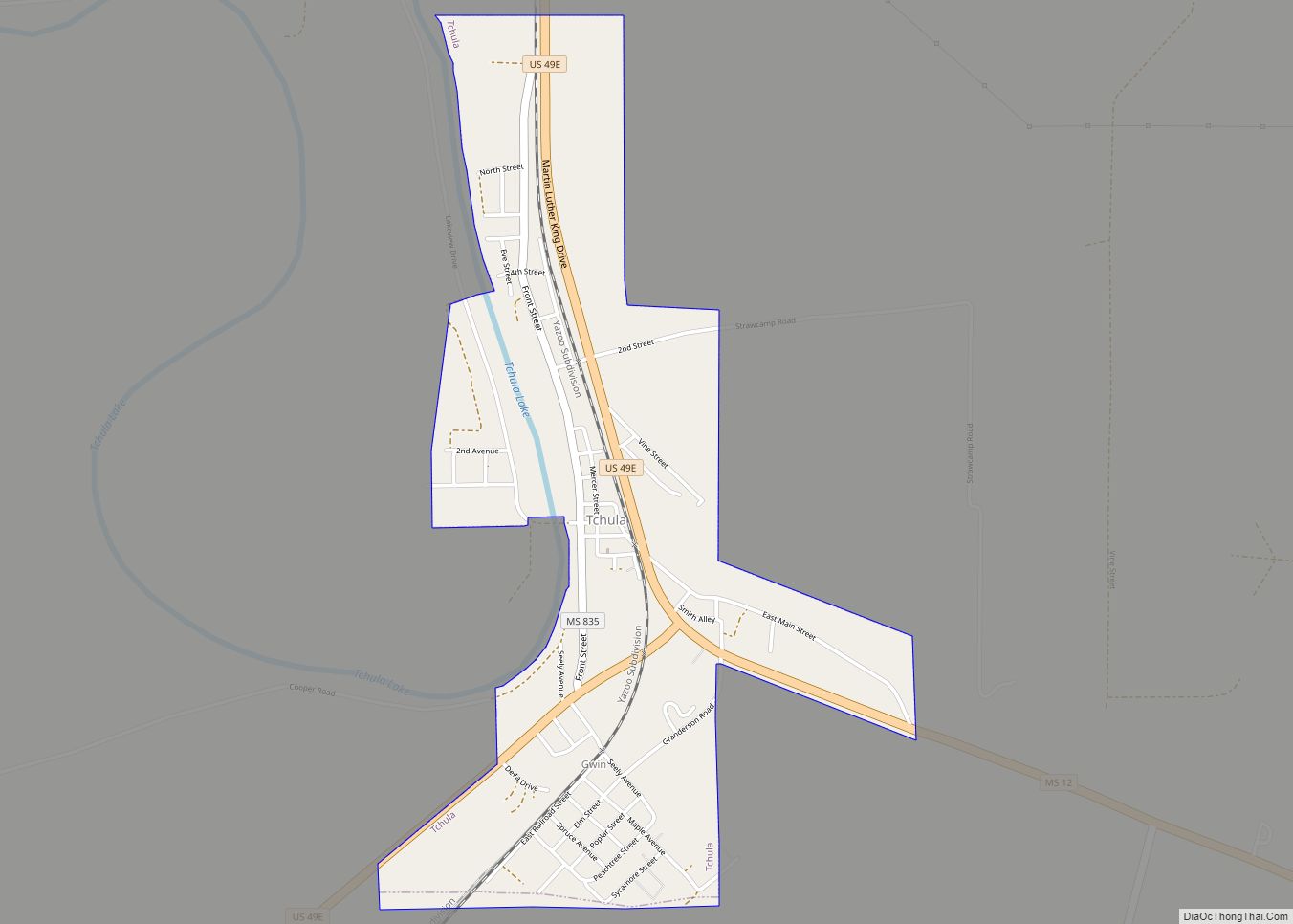Durant is a city near the central eastern border of Holmes County, Mississippi, United States, and Big Black River. The town was founded in 1858 as a station on the Mississippi Central Railroad, later part of the Illinois Central. Durant was named for Louis Durant, a Choctaw chief who had lived on this site before the United States undertook Indian Removal in the 1830s, forcing him and most of the Choctaw to Indian Territory west of the Mississippi River.
The population of the rural city was 2,673 at the 2010 census, down from 2,932 at the 2000 census.
About 3 miles away is the Castalian Springs Hotel, believed in 2020 to be the only surviving such spa structure in the state. A dozen mineral springs resorts were identified in the Works Progress Administration (WPA) Guide to Mississippi (1938), written during the Great Depression. Such springs were believed to have healing properties.
| Name: | Durant city |
|---|---|
| LSAD Code: | 25 |
| LSAD Description: | city (suffix) |
| State: | Mississippi |
| County: | Holmes County |
| Elevation: | 259 ft (79 m) |
| Total Area: | 2.26 sq mi (5.86 km²) |
| Land Area: | 2.24 sq mi (5.80 km²) |
| Water Area: | 0.02 sq mi (0.06 km²) |
| Total Population: | 2,231 |
| Population Density: | 995.98/sq mi (384.59/km²) |
| ZIP code: | 39063 |
| Area code: | 662 |
| FIPS code: | 2820500 |
| GNISfeature ID: | 0669521 |
Online Interactive Map
Click on ![]() to view map in "full screen" mode.
to view map in "full screen" mode.
Durant location map. Where is Durant city?
History
The Choctaw are a Native American tribe who occupied much of Mississippi as part of their territory well before any European exploration. They were among a succession of indigenous cultures established here for thousands of years. After they were forced to cede most of their land to the United States and to remove to Indian Territory in the 1830s, an increasing number of European Americans migrated here to develop the land for large cotton plantations. Before the Civil War, this was known as the “dark corner of the county.”
Cotton plantations were developed along the waterfronts to take advantage of the fertile soil and to have access to the rivers, which was the basis of transportation until later in the 19th century, when trains were developed. Planters exploited the labor of numerous black enslaved African Americans. The county has a majority black population.
The Castalian Springs Hotel, a two-story wooden building, was associated with the spa based at natural mineral springs and developed as a resort. Located 3 miles west of Durant, it reportedly was one of many sites used as a hospital to treat the more than 10,000 casualties of Confederate troops following the Battle of Shiloh in Tennessee in April 1862. Researchers are attempting to confirm if the existing building dates to the Civil War, or was a later replacement. Wounded troops were carried south by trains, and towns were asked if their people could care for them. Soldiers were taken from the train at the Durant station and carried by wagon to the hotel. About 90 Confederate soldiers died here through November 1863, and were buried in the Wesley Chapel Cemetery, about one-half mile away. All their graves were marked with new tombstones in the 1990s, as former temporary markers had been lost.
After the war, the hotel was adapted for other uses, first as a private girls’ boarding school, educating the daughters of planters and others who could afford it. The large property, which included acreage, was later used for the state YMCA camp. Later still it became a missionary camp, to prepare Protestant missionaries for service in rural areas overseas. Finally the hotel was boarded up and vacant for some years. About 2020, it was purchased by a local pair of brothers. They have held some church retreats here and related large events, and may develop some of it as a hunting camp. The hotel is believed to be the only surviving mineral springs resort of what were a dozen in the state during the 1930s, according to the WPA Guide to Mississippi (1938).
20th century to present
Beginning in 1890, white Democrats in Mississippi passed a new constitution and laws disenfranchising African Americans and closing them out of formal political participation. Jim Crow laws were passed confining them to second-class status, which persisted for decades past the middle of the 20th century. Although thousands of African Americans left the state in the Great Migration, seeking better opportunities elsewhere, those who remained in Holmes County in working to regain their constitutional rights, including to register and vote.
About 1935, Hazel Brannon Smith, a recent college graduate from Gadsden, Alabama, bought the local weekly newspaper, the Durant News, which had been failing. Over the next several years, she turned it around, and served as its editor and publisher into the early 1970s.
In the 1950s she also acquired the Lexington Advertiser, and later two other small papers, and was based in Lexington, the county seat. She was among the first journalists to cover the African-American community for its positive contributions, for instance, noting in 1943 during World War II that a local civic group had donated money to the Red Cross. Later she became well known for her editorial writing about the civil rights movement; Holmes County had many activists involved in education and voter registration. In 1964 Smith was the first woman to be awarded the Pulitzer Prize for Editorial Writing.
The area is still largely rural and agricultural, but industrial-scale farming and mechanization reduced the need for labor decades ago. Many residents left, but among those who stayed, there is considerable unemployment. The population has declined although state and local government have sought redevelopment. The historic brick train depot (see photo above) is to be restored for new uses and is being highlighted as part of the area’s heritage tourism. Other historic resources are being highlighted.
Since the late 20th century, missionary nurses from orders outside the state have been among those working on behalf of poor city and county residents. Local and state citizens were shocked on August 25, 2016 when two 68-year-old nuns were found stabbed to death at their home on Castalian Springs Road: Sister Paula Merrill was a nurse practitioner with the Sisters of Charity of Nazareth in Kentucky, and Sister Margaret Held was a nurse practitioner with the School Sisters of St Francis in Milwaukee. Rodney Earl Sanders, from nearby Kosciusko, was charged with the murders. The Mississippi Bureau of Investigation (MBI) participated in investigation of the case.
Durant Road Map
Durant city Satellite Map
Geography
Durant is in eastern Holmes County on the west side of the valley of the Big Black River. U.S. Route 51 passes through the center of town, leading north 19 miles (31 km) to Vaiden and south 8 miles (13 km) to Goodman. Mississippi Highway 12 intersects US 51 in Durant; it leads east 17 miles (27 km) to Kosciusko and west 13 miles (21 km) to Lexington. Interstate 55 has an interchange with Highway 12 3 miles (5 km) west of Durant; I-55 leads south 61 miles (98 km) to Jackson, the state capital, and north 148 miles (238 km) to Memphis.
According to the United States Census Bureau, Durant has a total area of 2.3 square miles (5.9 km), of which 0.02 square miles (0.06 km), or 1.04%, are water.
See also
Map of Mississippi State and its subdivision:- Adams
- Alcorn
- Amite
- Attala
- Benton
- Bolivar
- Calhoun
- Carroll
- Chickasaw
- Choctaw
- Claiborne
- Clarke
- Clay
- Coahoma
- Copiah
- Covington
- Desoto
- Forrest
- Franklin
- George
- Greene
- Grenada
- Hancock
- Harrison
- Hinds
- Holmes
- Humphreys
- Issaquena
- Itawamba
- Jackson
- Jasper
- Jefferson
- Jefferson Davis
- Jones
- Kemper
- Lafayette
- Lamar
- Lauderdale
- Lawrence
- Leake
- Lee
- Leflore
- Lincoln
- Lowndes
- Madison
- Marion
- Marshall
- Monroe
- Montgomery
- Neshoba
- Newton
- Noxubee
- Oktibbeha
- Panola
- Pearl River
- Perry
- Pike
- Pontotoc
- Prentiss
- Quitman
- Rankin
- Scott
- Sharkey
- Simpson
- Smith
- Stone
- Sunflower
- Tallahatchie
- Tate
- Tippah
- Tishomingo
- Tunica
- Union
- Walthall
- Warren
- Washington
- Wayne
- Webster
- Wilkinson
- Winston
- Yalobusha
- Yazoo
- Alabama
- Alaska
- Arizona
- Arkansas
- California
- Colorado
- Connecticut
- Delaware
- District of Columbia
- Florida
- Georgia
- Hawaii
- Idaho
- Illinois
- Indiana
- Iowa
- Kansas
- Kentucky
- Louisiana
- Maine
- Maryland
- Massachusetts
- Michigan
- Minnesota
- Mississippi
- Missouri
- Montana
- Nebraska
- Nevada
- New Hampshire
- New Jersey
- New Mexico
- New York
- North Carolina
- North Dakota
- Ohio
- Oklahoma
- Oregon
- Pennsylvania
- Rhode Island
- South Carolina
- South Dakota
- Tennessee
- Texas
- Utah
- Vermont
- Virginia
- Washington
- West Virginia
- Wisconsin
- Wyoming











